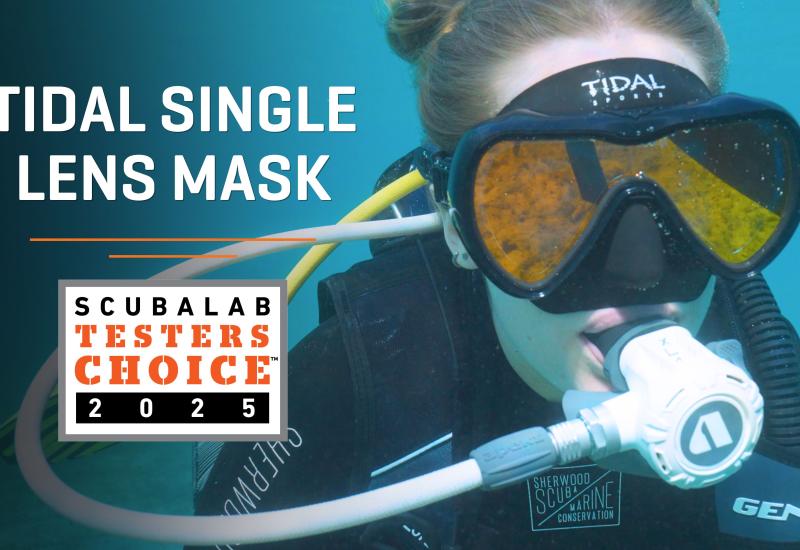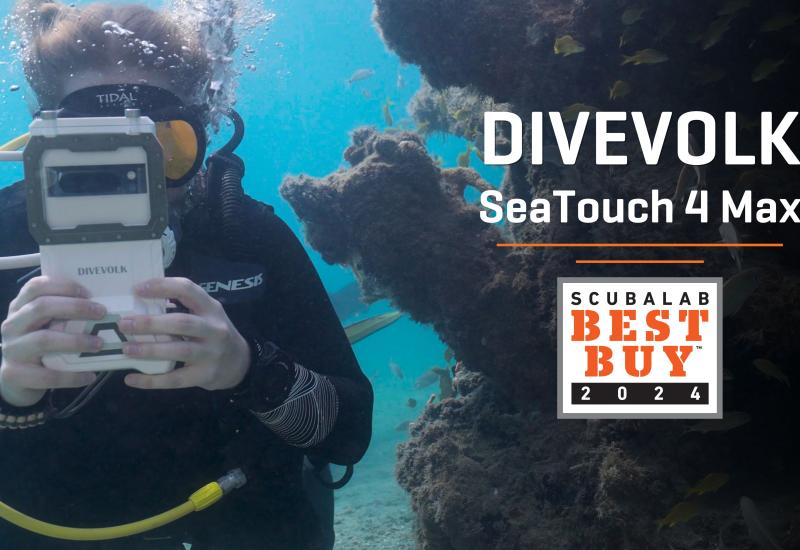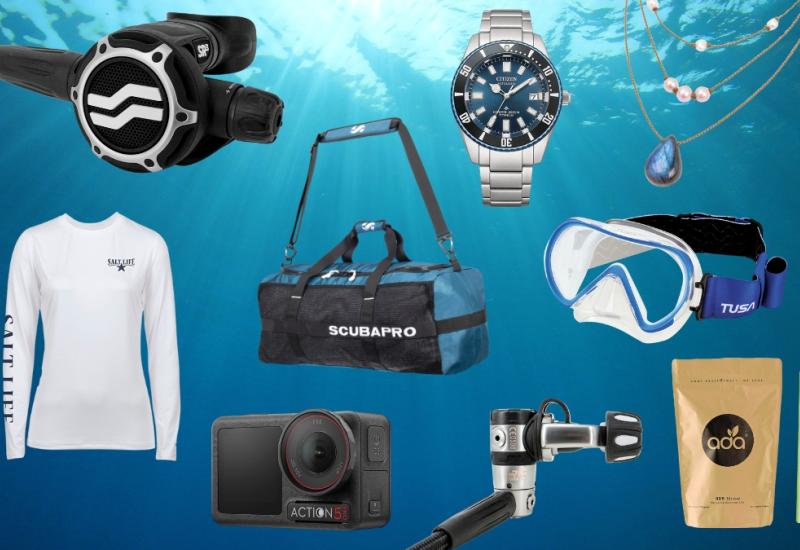ScubaLab: Fins

With a good pair of fins strapped to your feet, you can rocket through the water like a dolphin on steroids, kicking into currents and easily weaving through the reefs. All with complete control, in total comfort. With a not-so-good pair of fins, it’s a different story –– one of leg strain, ankle ache, kicking hard and getting nowhere. Of course, discerning the difference between a good fin and a not-so-good fin is virtually impossible if you can’t actually put them on and get them wet. Unfortunately, for the average fin-buying diver that’s usually not possible. That’s where ScubaLab comes in. We put out a call to gear manufacturers for their best new or redesigned open-heel fins. Ten models showed up. We assembled our team of divers and put these kickers to the test.
Getting Down to Business
ScubaLab fin tests are divided into three phases. In the initial phase we inspect fins to make sure all parts are accounted for and in proper working order. Then we weigh each fin separately (so the listed weight is for one fin, not the pair), take measurements and test for buoyancy in fresh water. Next come the speed tests. This year, four divers –– all males –– armed with digital underwater speedometers designed specifically for this purpose hit the test pool to take speed readings. (Note: We don’t test for speed strictly for speed’s sake. Past ScubaLab tests have shown that fins that generate good speeds also tend to generate the most thrust, are the most maneuverable and, in most cases, the most energy-efficient.) The final phase is the ergonomic evaluation. This year, eight test divers — five males, three females — supported by two on-deck supervisors took each pair of fins into the water and scored them in nine areas of real-world performance using a 5 to 1 scale (5=Excellent, 4=Very Good, 3=Good, 2=Fair and 1=Poor). They then supplemented their scores with written comments. The results of these evaluations are found in the following individual reviews.
Ergo Test Protocol
In-water fin evaluations are based on nine ergonomic criteria divided into three categories: MOST IMPORTANT: POWER VS. STRESS — The perception of power produced versus effort required. MANEUVERABILITY — The ease of turning as well as getting in and out of tight places using fin power –– i.e., backing up, changing or reversing directions, using small fin movements. ACCELERATION — During an underwater swim, the ability to pick up speed quickly. MODERATELY IMPORTANT: FIT AND COMFORT — How comfortable is the foot pocket, to be exact. ALTERNATE KICKS — Ease and effectiveness of flutter, frog and dolphin kicks. SURFACE SWIM — Both face down and swimming on the back. CONVENIENCE ELEMENTS: DONNING/DOFFING — Taking on/off prior to dive, after the dive. ADJUSTING FOR FIT — Ease of using buckles and straps, both in and out of the water. NONSKID — The sense of security on a wet boat deck geared up while wearing fins.
Test Stats Explained
Individual fin reviews open with a set of specs, which are self-explanatory, and a set of stats, which are not. Here’s what the stats mean and how we reached them. Top Averaged Speed Using a flutter kick at an average depth of 14 feet, test divers took each fin on three speed runs. The highest speed for each run was taken from each diver and then averaged to come up with the top averaged speed for each fin. Ergo Tests Total Score To lend the appropriate weight to the three ergo-test categories, each performance score in the “Most Important” category was multiplied by three; each score in the “Moderately Important” category was multiplied by two; and each score in the “Convenience Elements” category was multiplied by one. Scores in all categories were then added together to get the ergo-tests total score. Note: The highest-possible score a fin could earn was 90. Top 5 Favorites After the test diving was completed, test divers were asked to vote for their five favorite fins. These votes were then converted to points. Each fin was awarded five points for every first-place vote, four points for every second-place vote, three points for every third-place vote, two points for every fourth-place vote and one point for every fifth-place vote. All points were then tallied to determine the number of points each fin earned. Note: The highest-possible number of points a fin could earn was 40.
See Below for the Full Scuba Lab ** Fin Reviews from the May 2010 Issue
**

With a good pair of fins strapped to your feet, you can rocket through the water like a dolphin on steroids, kicking into currents and easily weaving through the reefs. All with complete control, in total comfort. With a not-so-good pair of fins, it’s a different story –– one of leg strain, ankle ache, kicking hard and getting nowhere. Of course, discerning the difference between a good fin and a not-so-good fin is virtually impossible if you can’t actually put them on and get them wet. Unfortunately, for the average fin-buying diver that’s usually not possible. That’s where ScubaLab comes in. We put out a call to gear manufacturers for their best new or redesigned open-heel fins. Ten models showed up. We assembled our team of divers and put these kickers to the test.
Getting Down to Business
ScubaLab fin tests are divided into three phases. In the initial phase we inspect fins to make sure all parts are accounted for and in proper working order. Then we weigh each fin separately (so the listed weight is for one fin, not the pair), take measurements and test for buoyancy in fresh water. Next come the speed tests. This year, four divers –– all males –– armed with digital underwater speedometers designed specifically for this purpose hit the test pool to take speed readings. (Note: We don’t test for speed strictly for speed’s sake. Past ScubaLab tests have shown that fins that generate good speeds also tend to generate the most thrust, are the most maneuverable and, in most cases, the most energy-efficient.) The final phase is the ergonomic evaluation. This year, eight test divers — five males, three females — supported by two on-deck supervisors took each pair of fins into the water and scored them in nine areas of real-world performance using a 5 to 1 scale (5=Excellent, 4=Very Good, 3=Good, 2=Fair and 1=Poor). They then supplemented their scores with written comments. The results of these evaluations are found in the following individual reviews.
Ergo Test Protocol
In-water fin evaluations are based on nine ergonomic criteria divided into three categories: MOST IMPORTANT: POWER VS. STRESS — The perception of power produced versus effort required. MANEUVERABILITY — The ease of turning as well as getting in and out of tight places using fin power –– i.e., backing up, changing or reversing directions, using small fin movements. ACCELERATION — During an underwater swim, the ability to pick up speed quickly. MODERATELY IMPORTANT: FIT AND COMFORT — How comfortable is the foot pocket, to be exact. ALTERNATE KICKS — Ease and effectiveness of flutter, frog and dolphin kicks. SURFACE SWIM — Both face down and swimming on the back. CONVENIENCE ELEMENTS: DONNING/DOFFING — Taking on/off prior to dive, after the dive. ADJUSTING FOR FIT — Ease of using buckles and straps, both in and out of the water. NONSKID — The sense of security on a wet boat deck geared up while wearing fins.
Test Stats Explained
Individual fin reviews open with a set of specs, which are self-explanatory, and a set of stats, which are not. Here’s what the stats mean and how we reached them. Top Averaged Speed Using a flutter kick at an average depth of 14 feet, test divers took each fin on three speed runs. The highest speed for each run was taken from each diver and then averaged to come up with the top averaged speed for each fin. Ergo Tests Total Score To lend the appropriate weight to the three ergo-test categories, each performance score in the “Most Important” category was multiplied by three; each score in the “Moderately Important” category was multiplied by two; and each score in the “Convenience Elements” category was multiplied by one. Scores in all categories were then added together to get the ergo-tests total score. Note: The highest-possible score a fin could earn was 90. Top 5 Favorites After the test diving was completed, test divers were asked to vote for their five favorite fins. These votes were then converted to points. Each fin was awarded five points for every first-place vote, four points for every second-place vote, three points for every third-place vote, two points for every fourth-place vote and one point for every fifth-place vote. All points were then tallied to determine the number of points each fin earned. Note: The highest-possible number of points a fin could earn was 40.
See Below for the Full Scuba Lab ** Fin Reviews from the May 2010 Issue
**










